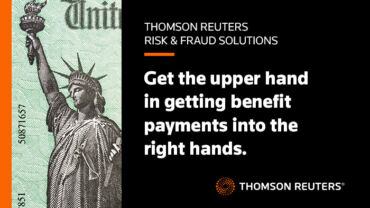The US federal government has uncovered significant sources of fraud involving telehealth medicine and treatment, which increased greatly during the global pandemic
The U.S. Department of Health and Human Services Office of Inspector General (OIG) issued a special fraud alert on this past summer for providers entering into arrangements with “purported telemedicine companies.” The OIG issued the alert on the same day the U.S. Department of Justice (DOJ) announced a major enforcement action involving $1.2 billion in fraudulent claims related to telemedicine.
The DOJ’s action resulted in the arrest of 36 defendants in 13 federal districts in alleged fraudulent schemes involving telemedicine, cardiovascular and cancer genetic testing, as well as durable medical equipment. The investigation targeted schemes involving the payment of “illegal kickbacks and bribes” by laboratories and others in exchange for the referral of patients by medical professionals working with fraudulent telemedicine and digital medical technology companies. The Centers for Medicare & Medicaid Services (CMS) Center for Program Integrity also announced administrative actions against 52 providers involved in similar schemes.
Telemedicine schemes accounted for more than $1 billion of the total alleged losses associated with the enforcement actions, according to the DOJ. A September OIG report identified $127 million in high-risk billing for telehealth services to Medicare during just the first year of the COVID-19 pandemic.
OIG special fraud alert
The OIG also has conducted dozens of investigations into fraud schemes involving companies claiming to provide telehealth, telemedicine, or telemarketing services. In some schemes, telemedicine companies paid physicians and other practitioners kickbacks to write orders or prescriptions for “medically unnecessary” durable medical equipment, genetic testing, wound care items, or prescription medications that resulted in the submission of fraudulent claims to federal healthcare programs.
The OIG fraud alert identifies the way telemedicine companies use kickbacks to “aggressively recruit and reward” practitioners to order or prescribe medically unnecessary items and services for patients who are solicited and recruited by the telemedicine companies as a common element of these schemes. The telemedicine companies pay the practitioners for ordering the services or prescriptions for patients “they never examined or meaningfully assessed” to determine the medical necessity of the items or services before they are ordered.
Often the amount telemedicine companies pay to the practitioner correlates with the “volume of federally reimbursable items or services” the practitioner orders. Not only do these volume-based fees implicate the federal anti-kickback statute, they can also “corrupt medical decision-making, drive inappropriate utilization, and result in patient harm,” according to the OIG alert.
Suspect characteristics of telemedicine arrangements
As part of its fraud alert, the OIG developed a list of “suspect characteristics” based on its experience investigating telemedicine fraud. Factors that suggest an arrangement presents a “heightened risk of fraud and abuse” include:
-
-
- The patients for whom the practitioner writes orders were identified or recruited by the telemedicine company, telemarketing company, sales agent, call center, at a health fair, or through internet, television, or social media advertising for “free or low out-of-pocket cost items or services.”
- The practitioner does not have sufficient contact with or information from the patient to “meaningfully assess the medical necessity of the items or services ordered or prescribed.”
- The telemedicine company pays the practitioner based on the volume of items or services ordered or prescribed but characterizes the payment as being based on the number of medical records the practitioner reviews.
- The telemedicine company only provides items and services to federal healthcare program beneficiaries and does not accept insurance from any other payor.
- The telemedicine company may claim to only provide items and services to individuals who are not federal healthcare program beneficiaries but actually bills federal programs.
- The telemedicine company provides only one product or type of product such that a practitioner’s treat plans are predetermined.
- The telemedicine company does not expect any follow-up care with the patients after the item or service is ordered.
-
Practitioners entering into arrangements with telemedicine companies that exhibit one or more of these suspect characteristics may face criminal, civil, or administrative liability depending on circumstances of the case.
Pandemic expansion of telehealth services
During the pandemic, Medicare expanded the areas where telehealth could be used and also increased the number of services available via telehealth from 118 to 264. Although necessary to ensure individuals who could not receive medical care in person due to pandemic restrictions, the increased use of telehealth also increased the risk of fraud.
In a survey of 742,000 providers who billed Medicare for telehealth services during the first year of the pandemic, the OIG “identified 1,714 providers whose billing for telehealth services during the first year of the pandemic poses a high risk to Medicare.” The providers billed for telehealth services for “about half a million beneficiaries” and received a total of $127.7 million in Medicare fee-for-service payments. Payments made by Medicare Advantage plans to providers are not reported to Medicare, so the amount lost to fraud is likely much higher.
The OIG also found that 991 providers or “more than half of the high-risk providers” it identified were part of a medical practice with at least one other provider “whose billing poses a high risk to Medicare.” This suggests that the practice groups “are encouraging such billing among their associated providers,” according to the OIG. Additionally, 41 of the providers with high-risk billing appeared to be associated with telehealth companies, although Medicare data does not systematically identify those companies.
Although the review found only a “small proportion” of providers were high-risk billers, the OIG made five recommendations to the CMS to reduce the risk of fraud, waste, and abuse in telehealth. The recommendations include actions to:
-
-
- strengthen monitoring and targeted oversight of telehealth services;
- provide additional education to providers on appropriate billing for telehealth services;
- improve the transparency of services when clinical staff primarily deliver the telehealth service;
- identify telehealth companies that bill Medicare; and
- follow up on the high-risk providers identified in the OIG report.
-
Although the COVID-19 pandemic may be easing in the United States, the risk of fraud remains. Unscrupulous providers continue to exploit the vulnerabilities of providing remote services, and payers should remain vigilant to their schemes.
Portions of this article were previously published by Thomson Reuters Regulatory Intelligence.







